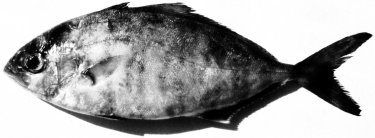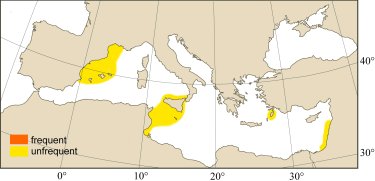
|
Relevant synonyms
Misidentification
Meristic formula
|
|
| photo : Francisco Riera |
|
SHORT
DESCRIPTION
color :
adults: dark pinkish or violet dorsally, sides lighter, and belly white or silvery. Juveniles (smaller than ca. 20 cm fork length): yellow with 7 dark body bars, irregular and broken, third to seventh extending onto the inter-radial membranes of the second dorsal and anal fins, and an eighth bar, small and dark, at end of caudal peduncle.
size :
common 8-25 cm (Mediterranean) (max. 67.5 cm - Atlantic). |
DISTINGUISHING CHARACTERISTICS
BIOLOGY / ECOLOGY
habitat :
juveniles epipelagic under floating objects in oceanic waters or in offshore neritic areas, and adults bentho-pelagic. |
|
1st
MEDITERRANEAN RECORD
|

|
|
DISTRIBUTION
|
ESTABLISHMENT SUCCESS
speculated reasons for success :
|
|
|
MODE OF
INTRODUCTION |
IMPORTANCE TO
HUMANS |
|
KEY
REFERENCES
|
|